CIVILITY at STLCC
Board Policy Causes Concern Over Faculty Freedom
Jacob Politte MANAGING EDITOR
In recent years, STLCC and the college’s Board of Trustees inserted a “civility clause” into their official policy manual.
This clause was added during the onset of the pandemic in May 2020, and was most recently revised on July 1, 2021.
While the policy appears to be straightforward on paper, some faculty have expressed concerns about its vague nature, and fear that as a result the policy may be “weaponized” to intimidate anyone who speaks out or disagrees with the college.
STLCC Chancellor Jeff Pittman strongly disagrees with that sentiment.
“The entire purpose of the policy is to add protections for all members of the College community so that they are free from the impact of uncivil behavior, as defined in the policy,” Pittman said. “So, no, I do not think that the policy takes any protections away from faculty or any other member of the community.”
The policy itself
In the original May 2020 addition, the Policy reads “In an effort to maintain a safe workplace free of harassment and to promote a positive learning environment for students and staff, respectful and civil behavior is required on College property, in College-sponsored transportation, and at College-sponsored activities and events. All persons having business with the College including, but not limited to students, faculty, staff, Board of Trustees members, volunteers, visitors, and patrons shall treat one another with civility, courtesy, and respect. Abusive conduct shall be prohibited.
Abusive conduct shall be defined as any behaviors that are physically or verbally threatening, either overtly or implicitly, as well as behaviors that are coercive, intimidating, violent, or harassing. This conduct can be verbal, nonverbal, or physical conduct directed toward a College employee that, based on its severity, nature and frequency of occurrence, a reasonable person would determine is intended to cause intimidation, humiliation, or unwanted distress. A single act does not constitute abusive conduct.”
The college goes on to list several examples of what may constitute abusive conduct: “use of profanity; personally insulting remarks; attacks on a person’s race, gender, gender identity or expression, national origin, religion, sexual orientation, or disability; and/or behaviors that are disruptive to the College and work environment, including College events.”
This “abusive conduct” could take place throughout a variety of mediums. The college lists those mediums as: telephone or text conversations; voice mail messages; face-to-face conversations; written letters; e-mail communications; or on College social media. STLCC Policy also stipulates, however, that investigation into this conduct may not necessarily be limited to these mediums.
In a revision from July 2021, the college once again revised the policy. While most of the text remained unchanged, there was one very notable difference.
While the college previously had said that “a single act does not constitute abusive conduct,” they revised it to now state that “a single act may constitute abusive conduct.”
The policy, while detailing some examples of what may constitute abusive and unprofessional conduct, remains rather vague on how determinations on said conduct may be reached on a case-by-case basis, according to concerned faculty members. Who will make those determinations?
And perhaps most importantly, is a “civility policy” even necessary? Why did the college feel the need to institute one? And why was the policy revised?
The view of STLCC Administration
Chancellor Pittman says that before 2020, many college policies had not been reviewed and revised for an extended period of time.
“The policies and procedures had not been reviewed in any comprehensive manner for many years,” Pittman said. “Many were out of date, and some issues commonly addressed in policy for colleges were not addressed in St. Louis Community College policies.”
Pittman says that there were no inciting incidents that led to the college’s adoption of the civility clause; instead, he says it came about as the result of a comprehensive review of Board Policies and Administrative Procedures initiated by the Board.
“Civility is a very common subject for policy statements in higher education, and the development of this policy was to align the College with best practices. I am not aware of specific incidents that led to the decision to include a civility policy as part of the College’s comprehensive policies, rather there was a desire to set a standard of expected civil discourse and absence of abusive behaviors or language,” said PIttman.
Pittman says that prior to this policy, conduct that constituted
BOARD POLICY B.14
REVISED JULY 1, 2021
The College recognizes and respects the right to hold and express different viewpoints. However, freedom of speech must be conducted in a manner that does not violate the rights of others to be free from harassment and intimidation. In an effort to maintain a safe workplace free of harassment and to promote a positive learning environment for students and staff, respectful and civil behavior is required on College property, in College-sponsored transportation, and at College-sponsored activities and events. All persons having business with the College including, but not limited to students, faculty, staff, Board of Trustees members, volunteers, visitors, and patrons shall treat one another with civility, courtesy, and respect. Abusive conduct shall be prohibited.
Abusive conduct shall be defined as any behaviors that are physically or verbally threatening, either overtly or implicitly, as well as behaviors that are coercive, intimidating, violent, or harassing. This conduct can be verbal, nonverbal, or physical conduct directed toward a College community member or visitors that, based on its severity, nature and frequency of occurrence, a reasonable person would determine is intended to cause intimidation, humiliation, or unwanted distress. A single act may constitute abusive conduct.
Examples of abusive conduct include, but are not limited to: use of profanity; personally insulting remarks; attacks on a person’s race, gender, gender identity or expression, national origin, religion, sexual orientation, or disability; and/or behaviors that are disruptive to the College educational and work environment, including College events.
Such interactions could occur in, but are not limited to: telephone or text conversations; voice mail messages; face-toface conversations; written letters; e-mail communications; or on College social media.
Any abusive conduct shall be reported immediately to the appropriate College personnel. A record will be made of any alleged incident and any action taken. Confidentiality will be observed when possible and appropriate to protect the complainant and the alleged offending person. Making false reports of abusive conduct shall be strictly prohibited.
Patrons and members of the general public who are determined to have violated this Board Policy may be subject to College action including prohibition or restriction of future contact and limitations on access to functions, activities, or College property. Retaliation against a person who reports a claim of uncivil behavior is prohibited.
unlawful discrimination or harassment was addressed, and he says that it continues to be addressed in policies and procedures addressing nondiscrimination and equity.
“Additionally,” he said, “Federal and state laws prohibiting discriminatory conduct and labor laws exist to protect employees from abusive and harassing behavior, which the College also continues to enforce.”
Regarding the policy’s 2021 revision, Pittman says it was a decision that was made to reinforce the significance of a civil environment at the College and to
simply further define the intention of the original policy for employees and students.
“While board policy is typically written at a high level,” Pittman said, “the Trustees who reviewed this section most likely wanted to emphasize this point to assist employees and students with the understanding of how serious abusive conduct is.”
Pittman also said that a committee is appointed by the Board of Trustees to review and update board policy, and that the once again just recently
VOLUME 58 ISSUE 4 DEC 8, 2022 WWW.MERAMECMONTAGE.COM
The
Serving the St. Louis Community College - Meramec community since 1964 • ACP Award Recipient
MONTAGE
CONTINUED ON P. 2
Board Policy: ‘The civility policy goes against Freedom of Speech’
CONTINUED FROM P. 1 formed the committee for this year to undergo a review of several board policy sections.
The
role of the Board of Trustees
Kevin Martin is the chair of STLCC’s Board of Trustees, and has served on the Board since April of 2017. He confirmed Pittman’s remarks about policy not being updated for several years.
“Several years ago, the Board recognized that we had not reviewed our policies as frequently as we desired,” Martin said. “Some of our policies were decades old.”
Martin said that the Board of Trustees instituted a transparent process that allowed for all “stakeholders” to have a voice in the development, review, and editing of policies. He says that they now have a rotating schedule to review certain policy sections each year with a Board committee.
“Generally,” he said, “there is a Board meeting in between the initial reading and final approval of any policies.”
Martin says that it is critical that the Board operates at the governance level and that they do not “get in the weeds.”
“This is the exact reason we develop policies, a budget, and strategic plan to allow the administration to carry it all out,” Martin said. “It is not the role of the Board to get involved in day-to-day operations or such matters.”
Martin says that the Board can both come up with and approve policies, but that they have the final say about what is approved.
“The administration may recommend a policy for the Board to consider, however, it is at the sole discretion of the Board as to which policies are to be approved,” he said. “Policies provide the College with a framework or ‘boundaries’ in which they should operate. Administrative Procedures are then created that are more detailed in how said policies will be implemented.”
Martin said that from the point of view of the Board, the policy came out of several discussions, and that the Board desired to establish it.
“This specific policy, as I recall it, came out of suggestions from our stakeholders,” he said.
The view of the faculty
A concerned faculty member who requested anonymity said that they felt as if the clause was too vague and so broad that it could potentially be used as a sort of “weapon” against “anyone who disagrees with you.” They said it has the potential to be used capriciously, that it is not objectively defined and that it can be and is being used to divide employees.
This person also said that they have seen the policy weaponized already on campus, and that they feel as if the administration has created an environment over time where people
have become afraid to ask questions and talk openly about various issues, and cited the situation surrounding then-adjunct professor Steve Taylor in fall 2017 at a STLCC Board of Trustees meeting as an example. In that situation, Taylor was tackled to the ground by a security officer as he approached the Board following a request, and then direct order to leave the meeting; Taylor was fired by the college a few days later. The incident made both local and national headlines.
The concerned faculty member also said that the policy may have something to do with Professor Emily Neal’s ongoing absence from the Meramec campus.
When asked about the Chancellors comments, they questioned if the implementation of the policy was necessary if the college already had policies in place to address the issues. They said they believe the civility policy goes against Freedom of Speech
what he wants in conjunction with the board.”
Reno says that he first became aware of the policy last year, but that the policy went through the normal Senate process and was viewed by members of the Senate.
“I would have seen it coming through as a Senate member last year specifically,” he said. “So I remember seeing it then.”
Reno continued, “I remember it being part of things that we had to look at to give feedback on [as a part of the Senate]. As to then it being laid out in terms of what it actually meant to an individual? No, I don’t remember there ever being an email or discussion at any level about it.”
Reno said that he wasn’t sure if the policy was a necessary addition to already existing STLCC policies.
“Truthfully, I didn’t understand what the purpose of it was, to a degree,” he said. “I know it was something that they wanted to institute. I never before had ever thought that it was necessary to have anything. So yeah, I wasn’t necessarily seeing it as a thing they needed to have. I don’t remember there being an issue with incivility at the college from my perspective.”
Pittman also says that the college may also assess the credibility of the person making the claim.
“[...] if you are asking whether the College would want to ensure that someone asserting a violation of the civility policy was credible,” he said, “yes, we would certainly want to assess credibility.”
He said that this may be accomplished in a number of ways. They include but are not limited to the witness’s level of involvement in the situation, and whether or not they may have a motive to misinterpret information. Pittman also says the point of view of the accused is taken into consideration.
“If the claim is about conduct of another,” he said, “does the other person admit to the conduct?”
Reno says that the terminology of the policy’s text doesn’t necessarily bother him, but says that the policy being misused would.
and Academic Freedom protections as well. They say that there has been a history of a growing sense of fear, using claims of being uncivil and threatening and of attempted union busting.
They also say that the situation with Professor Neal, which this person says they were not a witness to, is being talked about on campus with fear, and that they and many others find the lack of transparency surrounding it to be “disturbing.” They questioned who would be willing to be a strong advocate next, and believed that there may be more attempts in the future to silence forms of protest from faculty using this policy.
Professor Neal was contacted for this piece, but did not reply to requests for comment. The Montage has been unable to officially verify any substantial information regarding her absence. Vice Chancellor of Academic Affairs Andrew Langrehr also did not reply to a request for an interview.
When asked directly about Neal, Chancellor Pittman simply said “The college does not comment on any personnel actions.”
There were some faculty willing to go on the record, however. English Professor Shaun Reno is the chair of the Meramec Senate, and has been working at the Meramec campus for nearly two decades; he celebrates his twentieth anniversary at the campus next month.
“The Senate structure is such that we review any changes that go into administrative policy,” he said. “They come to us for review. Our goal is to make recommendations for any possible changes, and then that is sent onto the Chancellor.”
“Ultimately,” Reno said, “he can do
“It seems to me that [the policy] is going to be there, but it shouldn’t be a punitive process,” Reno continued. “My understanding is that it may be being used very punitively, which would be problematic, I think. It should be used more as a way of helping people understand what our expectations are, especially if the policy itself doesn’t lay out specifics. So, it seems to me that since it’s open to some degree of interpretation, having conversations about what some expectations are in certain work situations are probably important to have.”
Reno was also unsure about the policy’s overarching impact.
“I’m not certain that the policy itself is going to create a sense of civility. That’s going to be created through interactions with individuals anyway,” he said.
“The issue is, ‘How is it being implemented? And is it a fair system in terms of the way it’s being applied? I would always look at it [in terms of] how it actually affects people. And then, I think if it’s leading to problems instead of solving problems, if it’s creating incivility when it should be creating civility, I think that’s a problem. And then we might want to have a conversation about how we’re interpreting the policy and look at whether it needs to be changed,” said Reno.
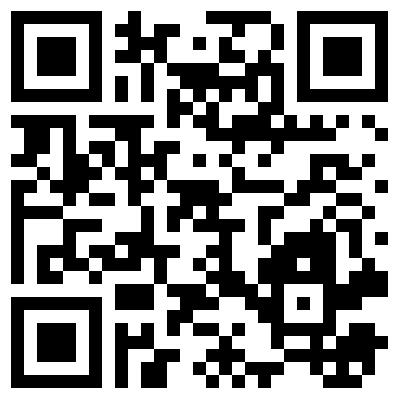
Terms and conditions
When asked what he thinks constitutes a reasonable person, Pittman said, “Generally, the ‘reasonable person’ standard means ‘what would a prudent person think about this, considering the same circumstances and context?” He says that this is a common standard used to assess various types of policy violation and that it is considered to be an objective standard.
“Any procedure isn’t going to be able to list everything, so in that sense it doesn’t [bother him]. But of course, if it’s being used in a way that is impunitive…any policy I think should be there to help encourage people to make good decisions and to help people, when the wrong decisions might be made, to help give us guidance about the way forward.”
He continued, “I think the issue is whether people understood the implications of it and how it would be applied. If it’s being applied in a way that people find to be troubling, I think that’s what we need to focus on.”
Pittman’s final view
While the college doesn’t necessarily believe that faculty would be violating the policy, Chancellor Piitman affirmed that they want to be prepared for the possibility.
“The leadership of the College certainly hopes that employees and students do not violate the civility policy,” Chancellor Pittman said. “A primary reason for adopting a policy is to clarify for all members of our community the community standards for civility. However, as with all policies, there is the possibility that the policy will be violated, and we would make every effort to respond appropriately if an issue is brought to our attention.”
Questions about who makes the determinations of what specific actions may violate the policy, what happens when a false claim is found to have been made, and the overall necessity of the policy were also asked, but the Chancellor and other members of the college administration were unable to respond further as of press time.
NEWS 2 Dec. 8, 2022
“The issue is, ‘How is it being implemented? And is it a fair system in terms of the way it’s being applied? I would always look at it [in terms of] how it actually affects people.”
-Shaun Reno, Professor
Vote Online: Do you think STLCC’s Civility Policy is fair to faculty?
Shannon Philpott-Sanders Faculty Adviser
Facebook.com/ meramecmontage/ Instagram.com “meramecmontage”


Youtube.com “montagelax”

Meramec Student Resources: Academic Success & Tutoring
FAWWAZ ASHRAF STAFF WRITER
Meramec offers a myriad of resources to help students succeed in their classes, and all of that falls under the jurisdiction of Academic Success & Tutoring. At their head, is the Academic Success Center (ASC), and under their umbrella is the Math Tutoring Center, College Writing Center, and Peer Tutoring.
The ASC is focused on helping students develop skills to succeed in any field of academics through a more generalized approach. The tutors at ASC can help one bolster important life and study skills such as note taking, reading comprehension, and organization. Many of the ASC’s tutors can also help with humanities courses, such as psychology, history, philosophy, but they’re also flexible for assisting in any class through coaching. If help is needed in specific content outside of their expertise, they’ll work to connect students with the other branches of Academic Success & Tutoring.
The branches of Academic Success & Tutoring are focused more on content tutoring. The Math Tutoring Center is dedicated to tutoring all levels of math offered at STLCC, and the College Writing Center focuses on helping students improve their writing, both in and out of the classroom. Peer Tutoring, however, is significantly more diverse. They offer a wide variety of subject-specific content tutoring all done by people who’ve already taken the respective classes at STLCC, so they’re familiar with the teachers and curriculums. A list of available tutors and subjects can be found online on the Academic Success & Tutoring webpage or outside of room 214 in the library.
THE MONTAGE
To place an advertisement, contact the advertising manager for rates, sample issues, etc., at 314-984-7857.

Editorial views expressed or content contained in this publication are not necessarily the views of St. Louis Community College, the Board of Trustees or the administration.
The Montage is a student publication produced seven times per semester at St. Louis Community College - Meramec, 11333 Big Bend Blvd., Kirkwood, Mo., 63122.
One copy of The Montage is free of charge. Up to 10 additional copies available, $1 each, at the office of The Montage, SC 220. Bulk purchases may be arranged with circulation manager.
Editorial policy: All letters should be no longer than 500 words and must include identification as a student or faculty member, phone number and address for verification purposes. Phone numbers and addresses will not be published. All letters are subject to editing for content and length. All letters submitted will be published in print and online.

Proud member of www.MeramecMontage.com
For the remainder of the fall semester, all parts of Academic Success & Tutoring can be found on the second floor of the library, but they’ll be moving to the new, dedicated space on the first floor of the student center starting in the spring semester. Additionally, many of the tutors are available online by appointment.
Kyra Green - she/her Green is a tutor for Anatomy & Physiology I & II, Fundamentals of Chemistry I, and General Chemistry I. She’s a former student at STLCC and is currently going to Southern Illinois University Edwardsville for nursing. Her favorite part of her tutoring subjects is participating in labs, and her favorite part of Academic Success & Tutoring is helping people and seeing students’ “Aha!” moments. A fun fact about Green is that she had corrective scoliosis surgery, and that’s one of the reasons she’s going into nursing. She can be found in room 207 in the library or online.
Rae Rothermich - they/them Rothermich is a tutor for Intro to Biology and Anatomy & Physiology I & II. They’re a former student at STLCC and are currently working to go into sonography, giving ultrasounds. Their favorite part of their tutoring subjects is the cardiovascular system, and their favorite part of Academic Success & Tutoring is the warm and welcoming environment everyone works to create. A fun fact about Rothermich is that this is their second go-around in education, as they originally got their bachelors in art education. They can be found in room 207 in the library or online.
Lyneé Emery - she/her Emery is a tutor for history, horticulture, world religions, and basic study skills. She’s an STLCC alumna. She was originally a horticulture major but switched to education.
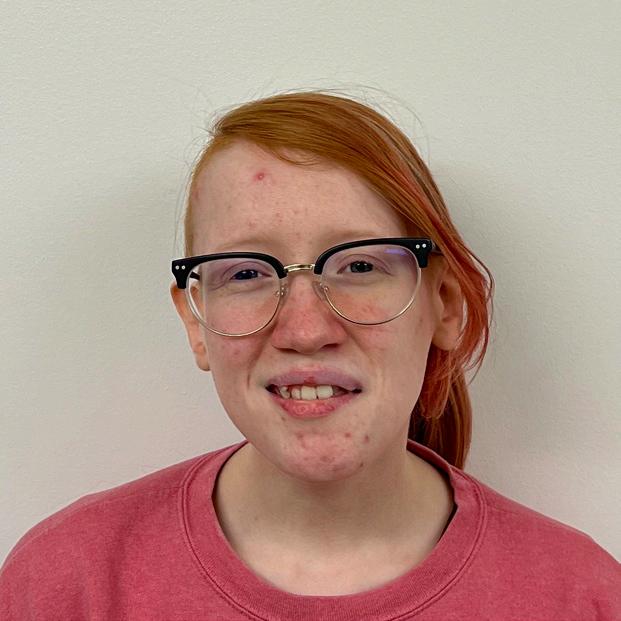



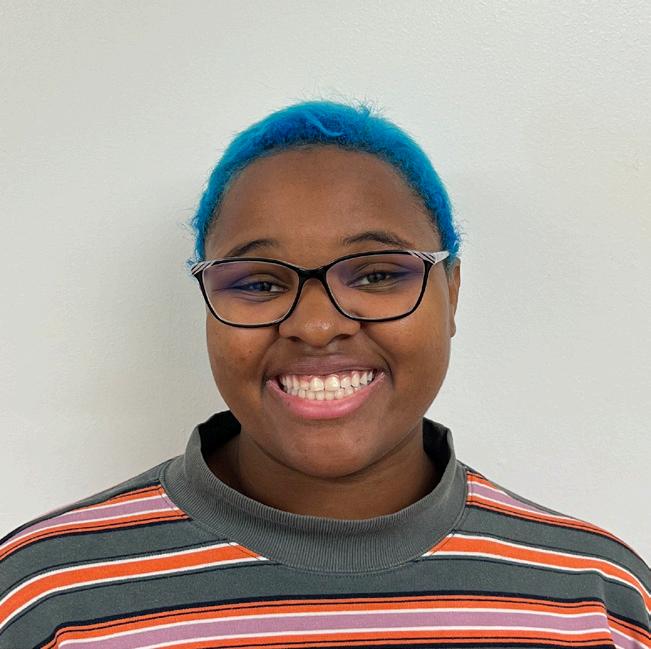
She’s now pursuing her bachelors in Native American Studies. Her favorite part of her tutoring subjects is history, specifically the indigenous people of America and the American Civil War. Her favorite part about Academic Success & Tutoring is watching students find themselves and build their confidence. A fun fact about
Emery is that she has a rock collection, her favorite being Labradorite. She can be found in room 218 in the library.
Stacey Sharp - she/her Sharp is a tutor for nursing. She graduated in May from STLCC’s nursing program, and she’s now an RN. She also used to work in special education. She’s developed a program this semester on how to study for nursing school and how to take nursing tests. She’s a neuro nurse, so within the field of nursing, her favorite part is neurology. Specifically, she finds strokes fascinating due to the wide variety of symptoms based on stroke location. Her favorite part about Academic Success & Tutoring is working with people who have a genuine desire to help students succeed. A fun fact about Sharp is that this is her third career path. Aside from special education, she also used to work in college and professional sports. She can be found in room 207 in the library or online.
Nikolai Wasson - they/them Wasson is a tutor for chemistry and philosophy. They are currently a chemistry major at STLCC and have taken all of the chemistry courses offered at Meramec up to Organic Chemistry I along with a few philosophy classes such as Introduction to Philosophy and Introduction to Logic. Their favorite parts of their tutoring subjects are the philosophy of science and the analysis techniques used to identify compounds in chemistry. Their favorite part of Academic Success & Tutoring is the amount of space dedicated to tutoring and the variety of subjects available. A fun fact about Wasson is that they are into upcycling, taking items that might be seen as waste and giving it purpose again. They can be found in room 214 in the library.
NEWS BRIEFS
Thank a Professor Project
The Faculty Development Advisory Committee is sponsoring a Thank a Professor project. Do you have a professor who has gone above and beyond for you? A favorite class you can’t stop thinking about? A new career path because of your professor?
Then now is the time to thank your professors, past and present!
Students have two options to
participate:
1 Fill out and submit this form: https://forms.office.com/r/ AqxYAMWKDC
2. Write a physical note and submit it in one of the boxes available in the library and the student center.
The deadline to participate is Sunday, December, 11. Your notes will be shared with your professor in January.
Toys for Tots Collection
STLCC will once again be participating in the Marine Toys for Tots Program this year to collect new unwrapped toys to then be donated to those in need during the holiday season. Drop off donations at the collection box located on the first floor of Clark Hall, next to the Financial Aid office. Please make your donations by noon on Monday, Dec. 12.
NEWS 3 Dec. 8, 2022
Twitter.com “themontage”
Top 10 Annoying Things Professors Do
JACOB POLITTE MANAGING EDITOR
Professors are highly respected, knowledgeable figures in the lives of many students. But that doesn’t mean they’re 100 percent free of faults. Professors are human just like the rest us, and that means that they too can have somewhat annoying tendencies. It doesn’t make them bad, but it does sometimes leave students shaking their heads.
In no particular order, here are the top ten annoying things that professors may do.
1. Not Providing Lecture Notes
It’s 2022. It’s about to be 2023. There is no legitimate excuse for not providing lecture notes to your students anymore. Handwritten notes are a thing of the past, even if they can be useful. No one can write notes that fast.
2. Utensil Shaming
We get it, you’ve been doing this awhile. You know what works best. But if someone’s using a calculator you wouldn’t use, or their binder isn’t as organized as it should be, maybe keep it to yourself. Or, at the very least, don’t say it out loud in front of everyone else. That can be pretty embarrassing for the student. Just because they’re taking slightly different steps doesn’t
mean they’re falling behind.
3. Constantly calling on the same person to make an example
Just because a student is at the front of the class doesn’t mean they want you to notice them. Call on the kids in the back on some occasions. They’re back there for a reason. But even then, make
5.

Fumbling usage of technology
Seriously, you’re a professional. Can you figure out how to get the projector to work? You’re wasting valuable class time just starting the thing! It takes 2 steps to get it to work properly! Also, why are you googling Google? You’re already on Google!
6. Canceling class at the last minute
The email and post on Canvas is nice, but it’s not nearly sufficient enough. Students may travel long distances to get to campus. While some situations are unavoidable, it’s still frustrating.
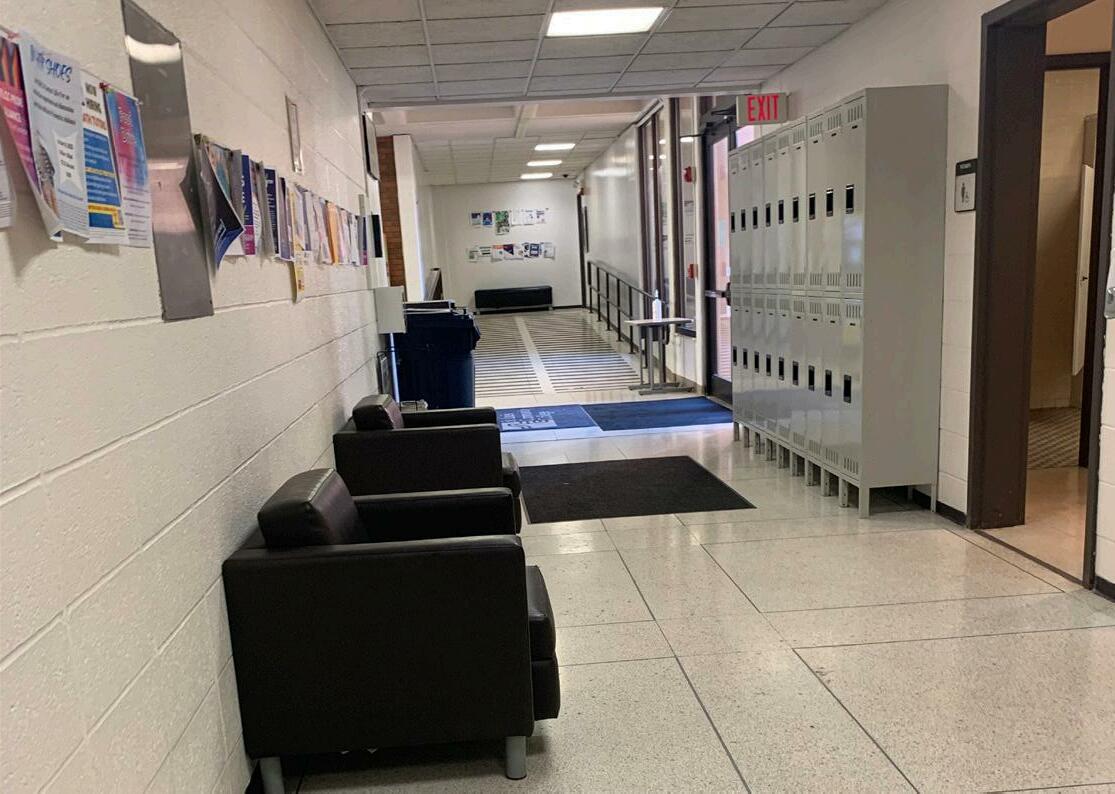

everyone who comes to this institution is an adult. They have lives and likely jobs outside of this place. There are other ways to measure learning than filling out a worksheet every class.
9. Not really using the textbook but requiring it anyway.
Hopefully most professors don’t do this, but some of them do. If they do use it, it’s in a very minimal way. Do you know how much that thing costs? If you’re going to require it for the course, use it. Frequently. Some guy wrote it so that it can be used.
10. Acting slightly annoyed when students don’t get something
sure to diversify your choices. It helps make every student feel more present.
4. Letting the class get too offtopic/Giving way too much information

Students may have interesting lives. Professors may have interesting lives. But there are only so many weeks in a semester. Every minute counts.
7. Not having accessible office hours
Students appreciate the syllabus making clear when you’re going to be in the office. But they also may have other classes. Virtual office hours may be an option, but no one likes staring at someone on a screen that much.
8. Assigning busy work weekly
This is an institution of learning. But
Top 7 Places To Relax on Campus

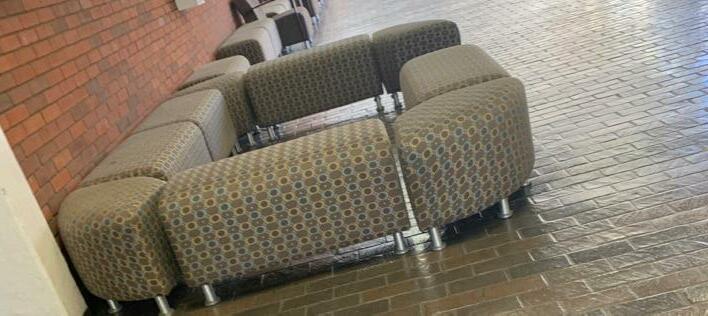

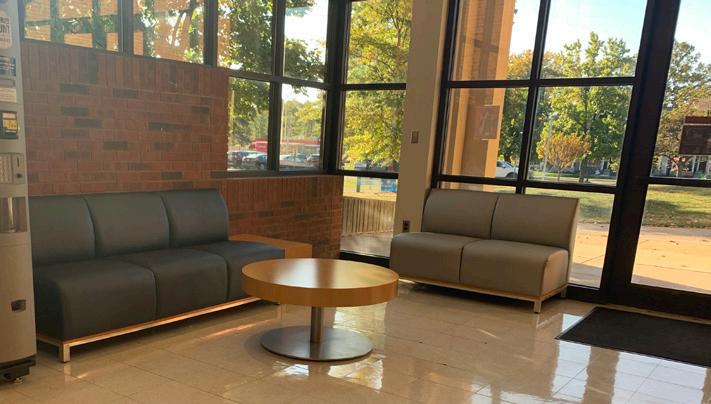 MACY GILLICK STAFF WRITER
MACY GILLICK STAFF WRITER
High school teachers often lie to their students when they talk about what professors’ expectations will be in college. If anything, college professors are usually much more accommodating than any high school teacher on the planet. That being said, they still can have similar tendencies in some cases, and one of those is losing their cool a little when a class doesn’t fully grasp the concept of something. One of the keys to making sure students succeed may be to have a cool head and have patience. College is no cake walk, and not everyone is on the same wavelength.
ART & LIFE 4 Dec. 8, 2022
1. Social
the
with chairs
2. Lecture Hall- This whole area is perfect. It’s a
place to talk
friends, plus
options
3. Humanities East- The
4. Science West- In the hallway near all the snakes and the turtle, you’ll find some benches and chairs. This place is awesome for both relaxing and watching the snakes and turtles. 5. Communications SouthWhen you go through doors, there are couches. These couches allow you to lie down or to put your feet up during a break. 6. Communications North
Once you walk in there are big chairs with a desk on the
of you. These chairs are perfect to relax in and you have room to do homework.
6 7 1 2 5 4 3
Science Building- Go down
steps and there’s a lobby
and couches. This place is perfect for some quiet work time.
great
with
there are many
to choose how to get comfy.
main lobby of this area. In this hall you get the opportunity to put your feet up.
-
right
7. Applied Sciences- The building to the left of the student center, features big chairs for a quick nap or a few minutes of relaxation.
Hanalai Oh navigates STLCC
Since 2019, Oh has had quite the journey at Meramec
 MORGAN DANIELS STAFF WRITER
MORGAN DANIELS STAFF WRITER
Hanalai Oh is a South Korean international student. She started at St. Louis Community CollegeMeramec in the fall of 2019. She’s pursuing an Associate of Science in Business Administration and aspires to transfer to her dream school, The University of Texas at Austin. In grade school, Oh developed a particular interest in English and decided to come to the United States to study.
While English was a part of the education system in Korea, Oh said, “It was more focused on writing and reading, not much speaking.” To gain more experience with the language, she decided to attend school in the states and moved to St. Louis because her father had a friend in the city. She and her family decided community college was a good starting point and the more affordable option. However, Oh struggled to receive adequate scholarships to fund her tuition.
As an international student, she cannot submit a Federal Application for Student Aid (FAFSA), and many of the scholarships provided by STLCC
require a FAFSA report. “I have to pay all of my tuition,” Oh said, “it’s a lot of pressure, but I knew that coming to STLCC.” To help fund her education, she is a part-time economics tutor. Though demand is low, and the pay isn’t much, Oh prioritizes studying and practicing her English. “I need extra study than American students because it’s not my first language,” she said, “I put pretty much all my time into studying. Not just the material but English.” Nevertheless, Oh tries to find time to hang out with friends and experience life in St. Louis.
When Oh started at STLCC, she tried to get involved with a few clubs, like the International Club, but she had to return to South Korea early in the spring semester because of the pandemic. For the next year and a half, she lived in Korea, putting a pause on her academic progress.
When she returned to campus, the clubs and activities on campus waned. “It’s a bummer that I wasn’t able to experience something that I could’ve before since the pandemic happened,” she said. Despite not being able to participate in clubs, Oh maintains a balanced social life. She gained a group of friends in a marketing class of six students in the fall of 2021. While
there aren’t many chances to talk to one another on campus, she also has friends in her community, and in her free time, she rock climbs.
After Meramec, Oh plans to obtain a BA in Business Administration and
return to South Korea. She wants to use her business education to open an English education center for Korean students.
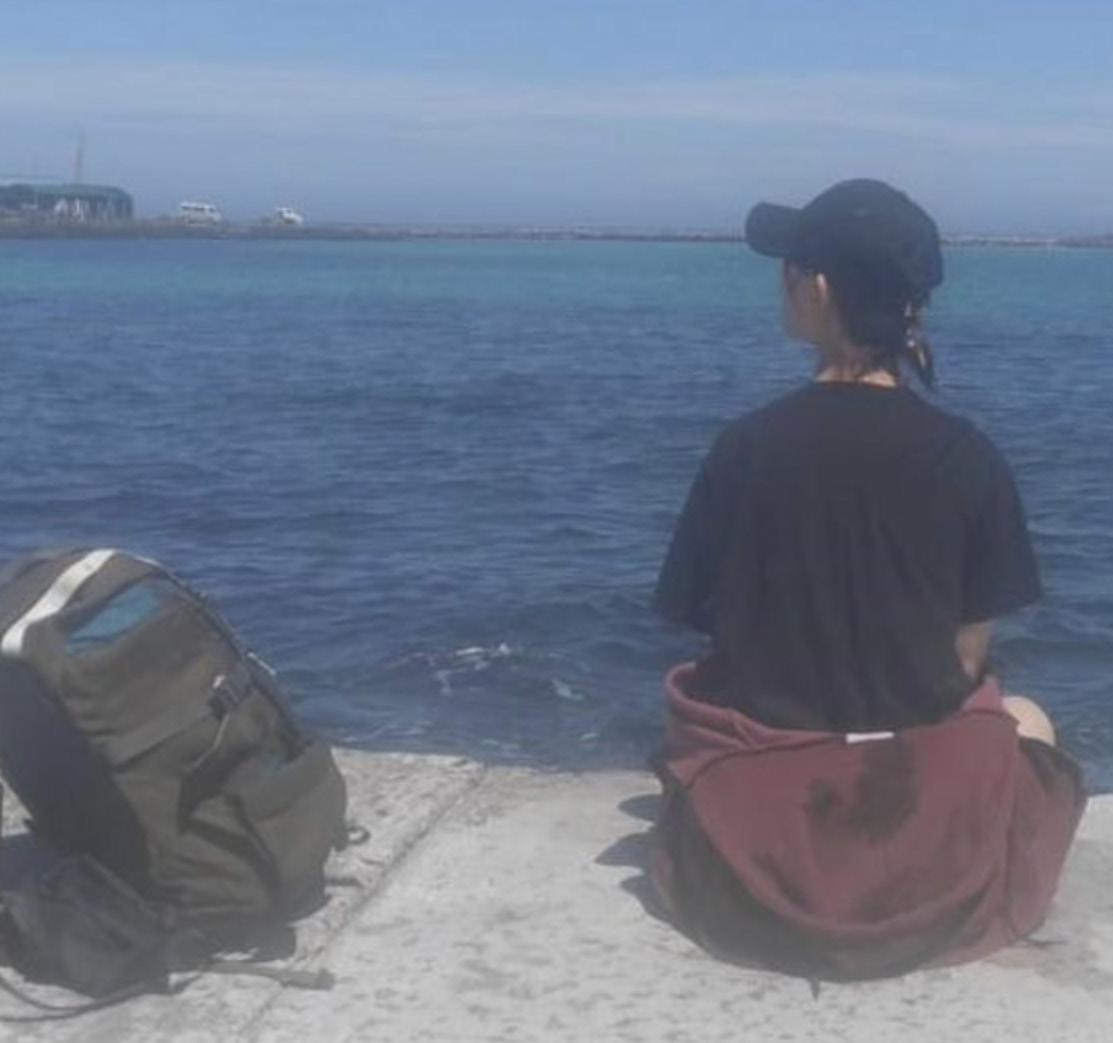
SNA teams up with SARC to provide resources to students
JACOB POLITTE MANAGING EDITOR
Two campus organizations have teamed up to benefit the student body as a whole, making it easier for them to get resources they made need.
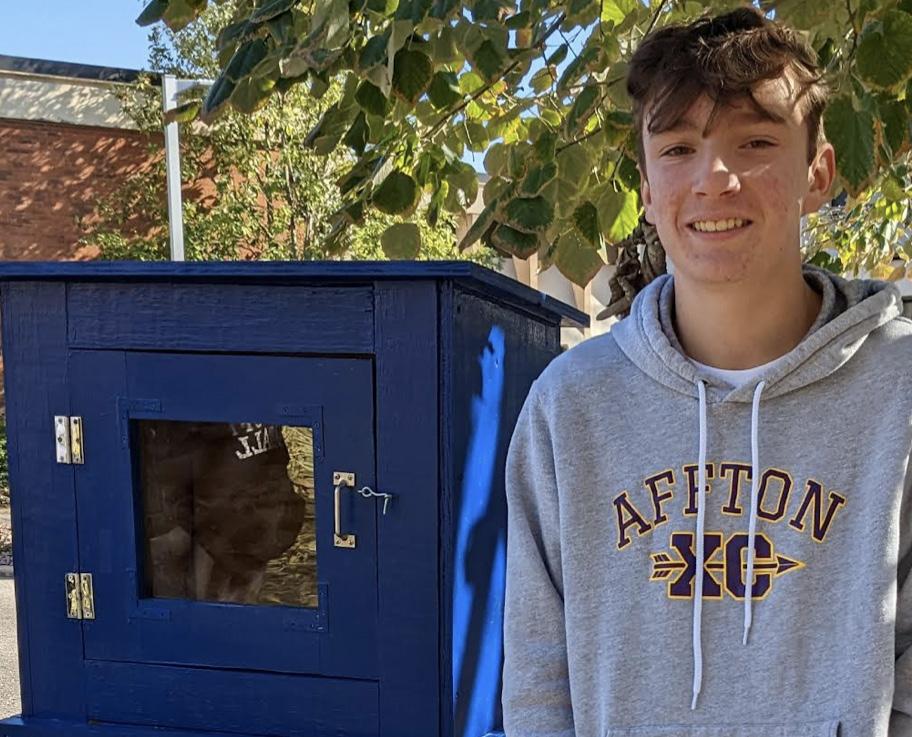
The Student Nurses Association (SNA) recently reinvigorated a partnership with the Student Assistance Resource Center (SARC).
Stacie Harrison, a faculty advisior for the SNA at Meramec, said that when that happened, both organizations noticed a problem.
“So few people knew about SARC and so few people knew of how they could help SARC,” Harrison said.
Noticing this dilemma, she said that the SNA reached out to the community and found a Boy Scout based out of Affton, Will Weiss of Troop 331, who
was in the midst of working on an Eagle Scout project.
The SNA and Weiss then collaborated on a special project: building donation boxes that could be placed around campus to collect a multitude of resources for SARC.
On Nov. 13, these boxes were placed in four locations around the Meramec campus, including locations at the Student Center, the Humanities building, and outside of Clark Hall.
Harrison said that students may both leave resources and take them out of the box as needed.
She said that the boxes may help student attending night classes more, as SARC isn’t open during those hours. She again emphasized, however, that all students are able to access the boxes if they need to.
5 Dec. 8, 2022 ART & LIFE
Boy Scout Will Weiss poses in front of a SARC Resource Box that he helped to build outside of Clark Hall.
submitted photo
photo by stacie harrison
COURSES
MUS 101,102,201,202 Music Theory I,II,III,IV
MUS 103 Basic Music
MUS 113 History of Jazz
MUS 114 Music Appreciation
MUS 115,116 Class Voice I,II
MUS 121,122,221,222 Class Piano I,II,III,IV





MUS 128 History of Rock Music
MUS 130 Beginning Guitar
MUS 138,139,216 Jazz Improvisation I,II,III
MUS 141,142,241,242 Applied Music (Lessons) I,II,III,IV
MUS 150 Fundamentals of Music Technology
MUS 152 Audio Engineering

MUS 154 Music Recording with ProTools I

MUS 211,212 Music History I,II Interested


MERAMEC
ENSEMBLES
Music 131 Concert Choir
Music 132 Orchestra


Music 134 Symphonic Band

Music 138 Jazz Improvisation
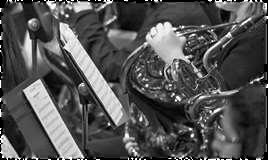
All ensembles hold a seat/part assignment hearing during the first rehearsal. Members of the Concert Choir may audition for the Chamber Singers For
contact Music at Meramec
Jerry Myers, Program Coordinator, gmyers34@stlcc.edu, (314) 984 7638
Join the Team
Meetings every Tuesday at 3 PM via Zoom or in Student Center, Room 220A
Contact Shannon Philpott-Sanders at ssanders147@stlcc.edu for more information.
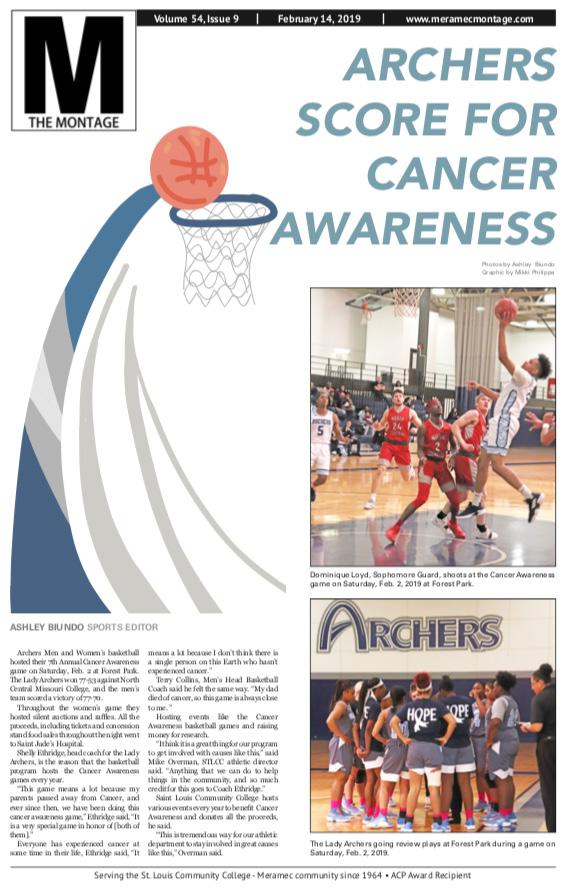
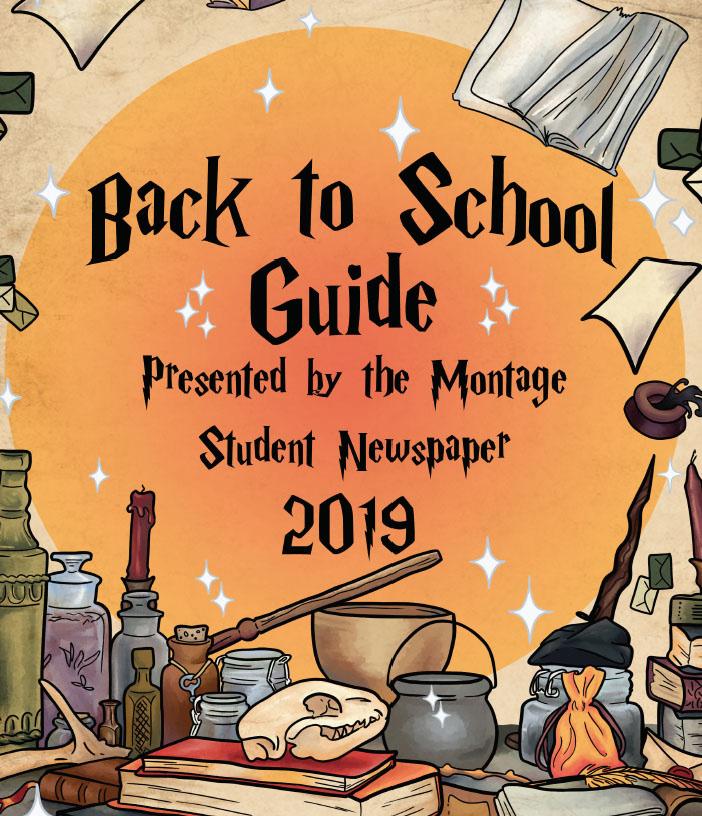
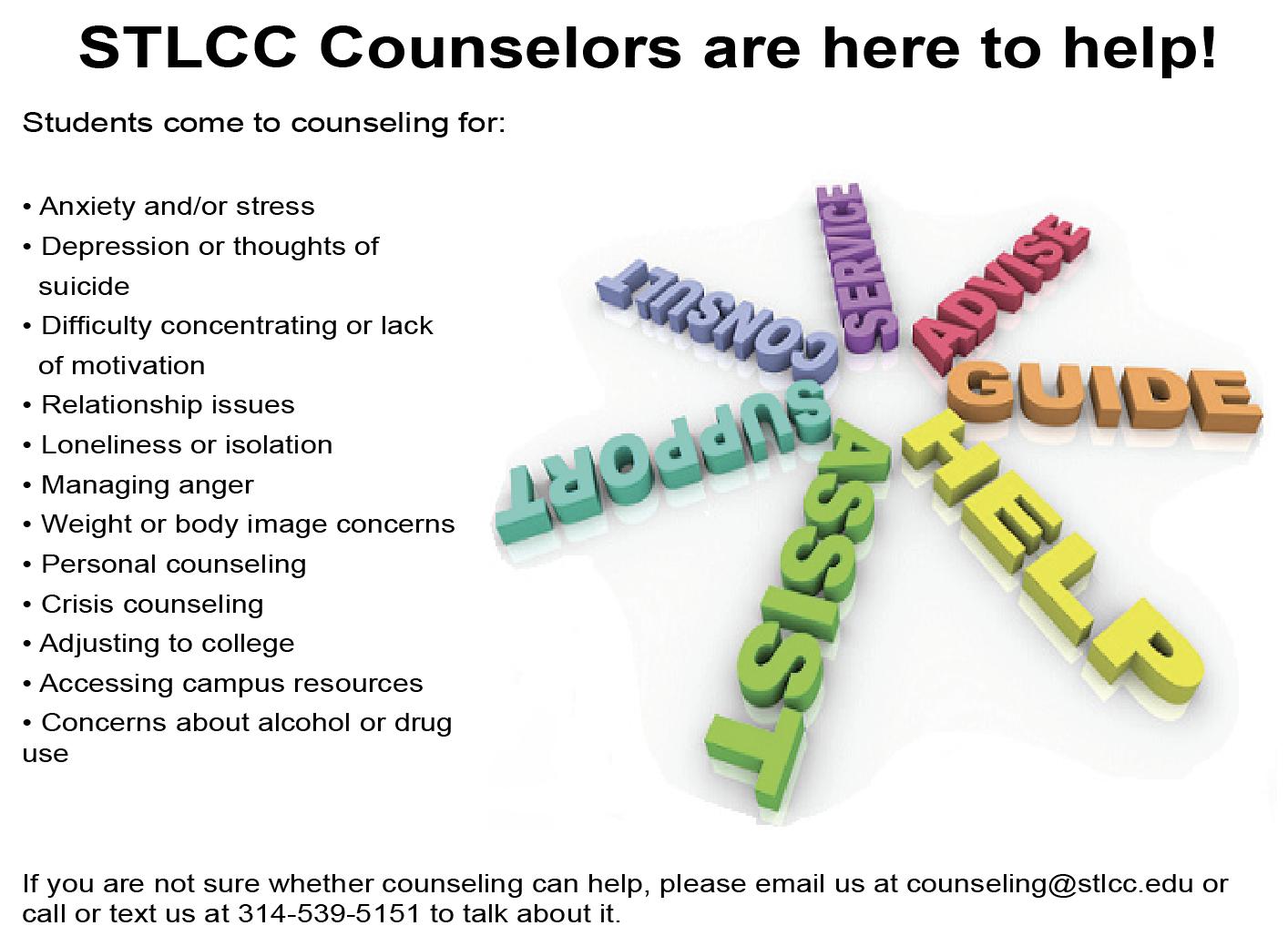
**
AVAILABLE **
The Music Program at Meramec offers courses and ensembles for all students. Classes are available for general education credit and the Associate in Arts degree with a concentration in Music to prepare for transfer into a Bachelor of Music program.
SCHOLARSHIPS
an
may
No
in performing in
ensemble? All Meramec students
participate.
audition is required! MUS131, 132 and 134 are CORE42 performance courses!
more information,
Dr.
‘Dahmer’ is an exercise in exploiting victims
RUBY FOLKNER STAFF WRITER
If you are sensitive to murder, please be aware of Netlfix’s ‘Dahmer.’
Although the excellent acting of Evan Peters is a true tour de force, Dahmer can’t escape the icky feeling of being an exercise in exploitation.
I think the show exploited the victim’s families and his heinous crimes far too much, whether that was the intention or not. For example, they do the exact court scenes of the victim’s families. They also use real stories. In the true crime community, there is a difference between showing and telling the crimes someone did. Documentaries do a good job of telling what a serial killer or any killer did. Netflix ‘shows’ it, and arguably takes it further than maybe it should have.
Despite the long list of victims, they made Dahmer seem like he was the biggest victim. Which, yeah his childhood was not great and now we know that could have possibly lead to a career as a serial killer. However, I don’t think this is the case. I have done all of you a favor and read the FBI’s Dahmer files. Dahmer stated in his interviews that his obsession with his crimes started at 14 when he realized he was gay and they only progressively get worse throughout time trying to suppress the obsession. Netflix doesn’t show this. Netflix and the show’s creators do not focus on the victims, and they didn’t ask the victims families for any form of approval or consent because “it was public knowledge.”
Overall, the show ‘Dahmer’ is good in that it showed what happened well. However, how Netflix handled the show’s production was terrible, with no account for the victims’ families or the trauma that they endured. And why they would use Evan Peters, a hot actor, as Dahmer is beyond me. Using hot actors for terrible people to romanticize them isn’t a good idea. Just remember, whatever happens in front of a camera doesn’t always make up for what happened in real life.

Your Harvard Probably Isn’t Harvard
Why ‘top colleges’ aren’t always the best
FAWWAZ ASHRAF STAFF WRITER
When I was a freshman in high school, I heard about a guy who committed suicide after being rejected by Stanford. At first, I thought it was an outlandish decision, but only a few years and many rejection letters later, I understood how he felt. I was drowning in the college-ranking KoolAid. After the final decision letter came in, I enrolled at the highest-ranking college that was willing to take me, but it didn’t take long before I realized my mistake.
I had reduced the college to numbers and hadn’t cared at all to research the university holistically. Almost immediately, I couldn’t help but feel out of place. The campus felt underwhelming, the professors appeared distant, and the students seemed uninterested in learning. Only a week into the semester, I dropped out.
For me and many prospective college students, rankings were a guiding light in the labyrinth of higher education, but the reality is that such a complex problem can’t be answered with just numbers. Especially considering that college rankings are highly subjective, easily manipulated, and exclude many important factors.
The U.S. News’s annual “Best Colleges” report is the most prominent college ranking in the United States, but that doesn’t mean its methodology reflects everyone’s tastes. According to the U.S. News’s own breakdown of its ranking system, they account for 17 factors, such as graduation rate, student-to-faculty ratio, and financial aid. While most of its factors are objective indicators of a college’s quality, how they’re weighted is not. For example, in the U.S. News’s ranking methodology report, they reveal that the student-to-faculty ratio only accounts for one percent of a college’s rank while standardized test scores account for five percent of a college’s rank.
Everyone has different expectations of what they want out of college, and for those who desire a quality, intimate education, the student-to-faculty ratio will play a more substantial role than selectiveness. It’s important to note, however, that these are just the weights from their 2022-2023 report. According to an article by James Monks and Ronald Ehrenberg in the journal Change, U.S. News’s ranking methodology changes often causing significant changes in rank between years even if the school hardly changed. Their rankings are too fickle and not an accurate representation of the progress of a university’s quality over time. Rather, they measure how well a university happens to fit the criteria that year. The idea of ranks being subjective can be applied to any ranking, weighted or not. Factors chosen in calculating a ranking are often chosen based on the opinions of other people, so they won’t always line up with what’s right for a specific person.
Regarding the quantifiable factors that college rankings do include, if colleges send fake data, they can
manipulate their rankings, and there have been many examples over the past decades.
One of the most notorious examples in recent memory was a scandal involving Columbia University. A CNN piece from 2022 by Michael Thaddeus, the whistleblower and a tenured math professor at Columbia, describes how the university was reporting fake numbers to U.S. News. Specifically, they claimed that “83% of its undergraduate classes enrolled under 20 students” when the real number was actually 57% placing them as second-worst for small class sizes in the Ivy League. The university also claimed that an “overwhelming majority of faculty on our main campus was full-time” when in reality it was closer to 50%.
After these numbers were revealed, Columbia University dropped from second place to eighteenth place. Through just a few numbers, Columbia was able to create such a significant impact on its ranking. Additionally, due to this controversy, their ranking may drop significantly in the next report, as their peer evaluation scores will likely plunge even though the quality of their academics won’t change at all.
If even an Ivy League school is providing fake information to increase its status even further, it’s easy to imagine how many other less renowned colleges send in fake information to boost their ranking.
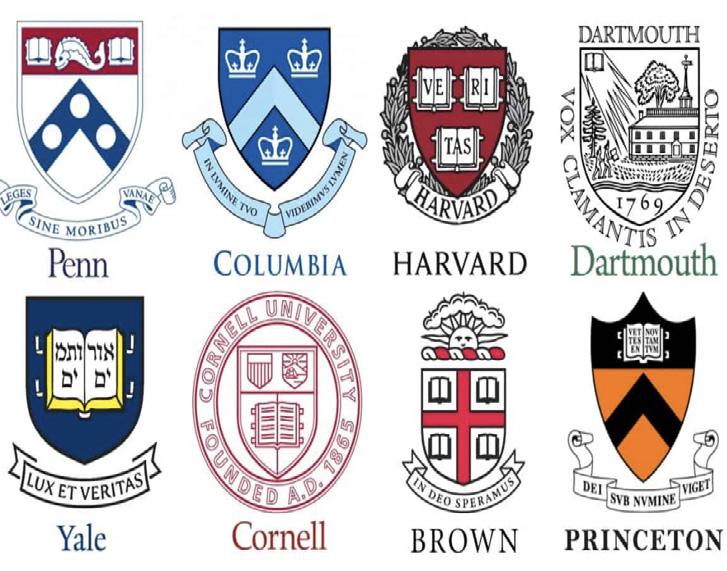
While college rankings tend to use many factors to determine a school’s ranking, campus life and culture are hardly ever considered. Every college has a unique feel that’s impossible to capture through numbers.
College tours are one of the best and most popular options to help capture that feel. Virtual tours also present a great option if visiting a campus physically isn’t feasible. However, school tours are tailored to focus on the best parts of a college, so it’s important to learn more before choosing the right college.
Dr. Tim Bono, a professor of psychology at Washington University who studies college transitions and predictors of well-being, spoke more about this in an interview. While studying mental health issues in college students he found that unrealistic expectations were the leading cause, and when asked about the best way to combat this, he said the best way to learn about a university is by engaging with current students. They are going to be able to give the most honest and up-to-date opinions on all of the specifics of a college. It’s important to know what’s in store so that one can set expectations accordingly.
Another large factor rankings don’t include is support for disadvantaged students, such as those with mental health issues. Studies from over the last few years have show that Ivy League schools all have terrible systems for handling leave such as setting minimum lengths or not providing any accommodations, Yale University and Dartmouth College being the worst. Despite these schools having the resources to provide these students with the help they need to succeed,
they neglect their needs. It’s especially concerning considering all of these schools are extremely selective, and all of their students have worked extremely hard and proven their academic prowess to get into these schools. These schools are often touted as the golden standard of higher education and sit at the top of nearly every major ranking, yet they fail their students so miserably when the conversation moves towards making sure the needs of disadvantaged students are met.
One of the largest reasons that people chase rankings is the idea that better-ranked colleges will result in greater career success. However, that doesn’t mean lower-ranking colleges can’t also provide excellent career opportunities, as quite a few lowerranked schools have better outcomes than some higher-ranked schools.
Another reason people tend to give college rankings so much weight is the idea that higher-ranked schools will provide a better education due to the overall better graduation and retention statistics and career success.
However, many of the highestranking colleges are also highly selective and only accept students who are already academically proven. By only admitting these students, top schools are able to keep up their stellar graduation and retention rates. Top colleges are able to keep up their prestige through selection bias. As long as top students keep enrolling at these schools, they’ll maintain a strong rank. This same principle can be applied to career success.
Students who were already destined for amazing careers feed into these schools, and when they reach the job market, the colleges get the credit for their success. Those who have the drive and ability to make something out of themselves will be able to do it regardless of the university they attend.
Choosing the right college is a difficult and time-consuming process, and everyone has unique needs. Rankings can be a solid way to start one’s college search by narrowing thousands of possible colleges down to a few hundred. From there, after finding an appealing college, it’s important to vet the school and make sure it’s somewhere one would be happy to attend for many years. This can start with reading reviews, watching virtual tours, and examining statistics, and if a college makes it past these steps, touring the campus, attending information sessions, and, most importantly, networking.
Only when one is thoroughly informed on both the positives and negatives of attending a college should one make their choice.
OPINIONS 7 Dec. 8 2022
Top Places To Go In St. Louis During The Holidays
 macy gillick staff writer
macy gillick staff writer
1Zoo Lights: When it comes to the St. Louis Zoo, there are many beautiful lights all around. According to KSDK, the remaining dates for Dec. 5-9, 12-23

and 26-30. Monday through Thursdays members are $8 and nonmembers must pay $9. Fridays through Sunday members are $10 and nonmembers are $11.”
2Winterfest at the Arch: Guests can enjoy ice skating in view of the arch and some hot chocolate. The location is Kiener Plaza and is open until Jan. 1. Thursday and Friday it opens at 4 p.m until 8 p.m. Saturday and Sunday it opens at 12 p.m until 8 p.m. Dec. 24 through Jan. 1 it’s open at 12 p.m until 8 p.m. Skates are $12.”
Garden Glow at Botanical GardensFamilies can enjoy some s’mores while looking at all the lights around. The Garden Glow starts at 5 pm and ends at 10:00 p.m. and is open until January 1st. For adult members tickets
3 4 5
are $12-$14 and for kid members tickets are $3-$5. For adults normal tickets are $18 and for kids it’s $10.
Christmas Farmer’s Market in Kirkwood- According to Downtown Kirkwood, “At the market they sell real christmas trees, wreaths and poinsettias. Also they sell holiday ornaments, decorations and baked goods. The market is open from 9 a.m to 9 p.m until Christmas Eve.”

Candy Cane Lane- The pleasant views over a neighborhood of lights. According to STL Homelife viewers can either enjoy this in their cars or can walk through it on foot. There is no cost to enter the long-running neighborhood attraction and it is available to see during the whole holiday season. This trail formally begins at 6579 Murdoch Ave.
About 50% of Webster University’s undergraduate students join our community with transfer credit from accredited institutions and military training. We offer guaranteed admission for students with an associate degree from a community college. Our transfer scholarships make earning a degree from an independent university affordable. We understand the needs of transfer students and are here to support your success.

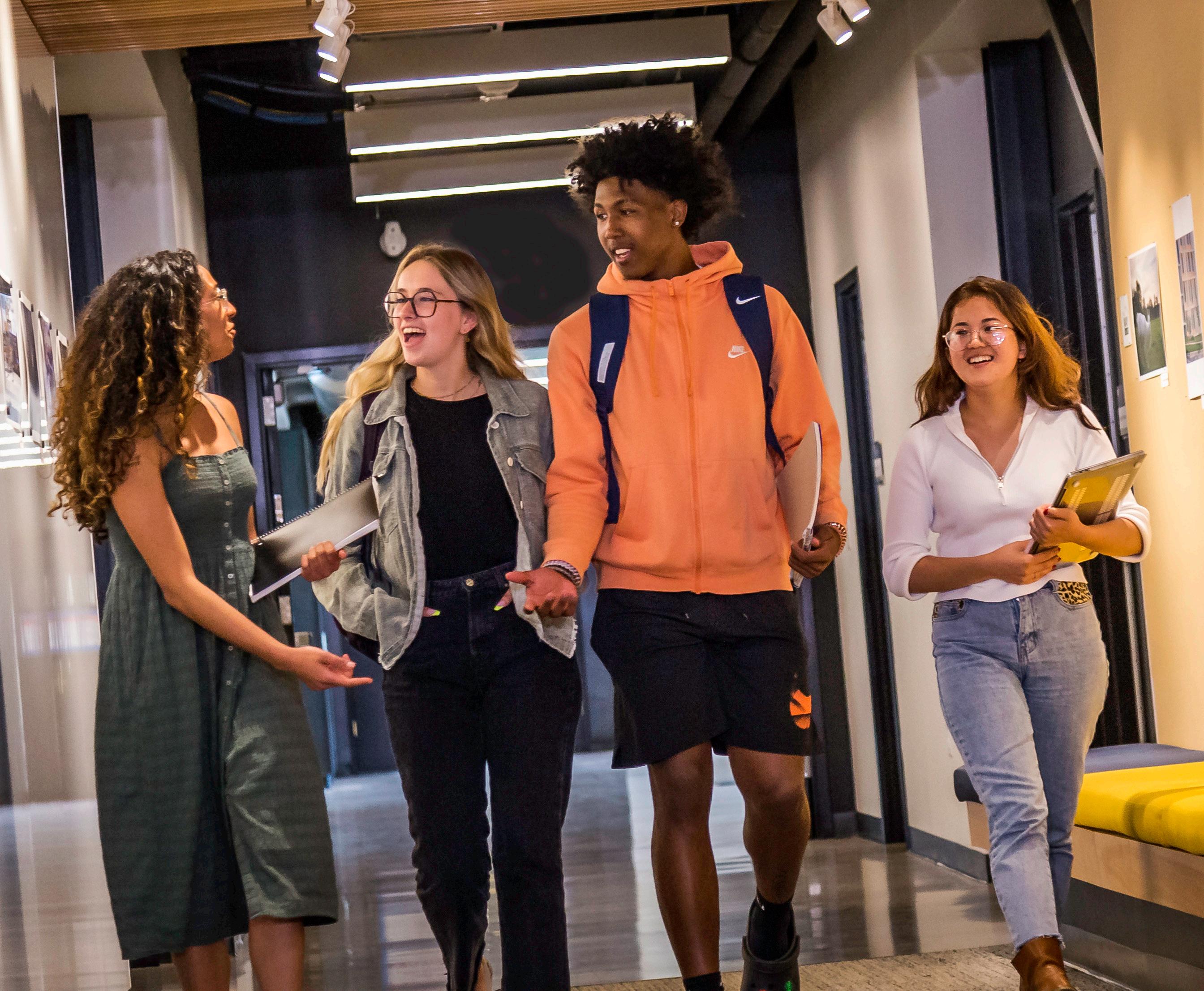
COMMUNITY 8 Dec. 8, 2022
Photo by: jacob politte
The entrace to Candy Cane Lane in South City welcomes residents and visitors.
YOU CAN DO IT HERE At Webster University, transfer students are a vital part of our campus and student life.
Webster University has been offering online degrees since 1999. Webster makes transferring easy. Schedule your visit today! webster.edu/transfer WU_Meramec_12_2022.indd 1 11/4/22 11:32 AM
Recognized for excellence in the development and support of dynamic and innovative
transfer
pathways for community college transfer students by Phi Theta Kappa for the 6th consecutive year.
Kirkwood sponsors the Christmas Farmer’s Market until Christmas Eve.
Photo by:: dakota pulcher



















 MACY GILLICK STAFF WRITER
MACY GILLICK STAFF WRITER
 MORGAN DANIELS STAFF WRITER
MORGAN DANIELS STAFF WRITER


















 macy gillick staff writer
macy gillick staff writer



